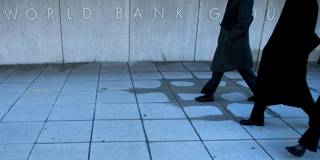Among the debt challenges facing low-income countries, strengthening the transparency of sovereign debt stands out as one where concrete and meaningful progress is within reach. Success will require practical technical solutions and full cooperation from creditors as well.
WASHINGTON, DC – From the COVID-19 pandemic to advanced-economy interest-rate hikes, developments over the last few years have left many developing economies struggling to repay their debts. But the problem might be even bigger than the world realizes, as many sovereign debts are hidden, undisclosed, or opaque. This prevents policymakers and investors from making informed decisions.

WASHINGTON, DC – From the COVID-19 pandemic to advanced-economy interest-rate hikes, developments over the last few years have left many developing economies struggling to repay their debts. But the problem might be even bigger than the world realizes, as many sovereign debts are hidden, undisclosed, or opaque. This prevents policymakers and investors from making informed decisions.